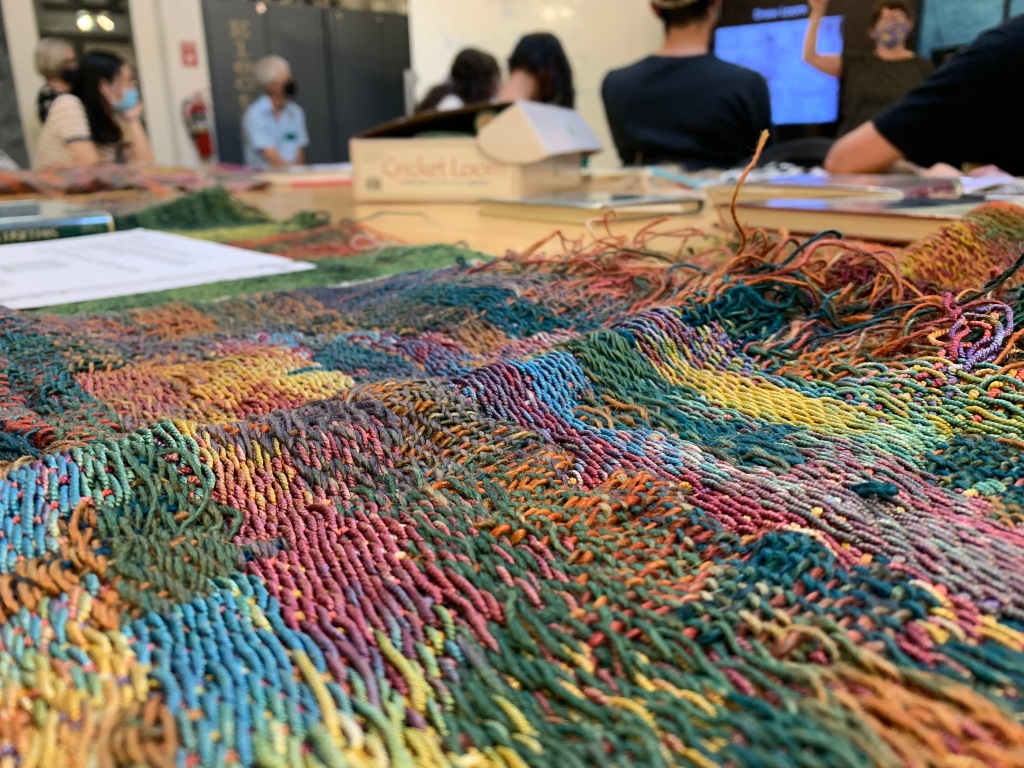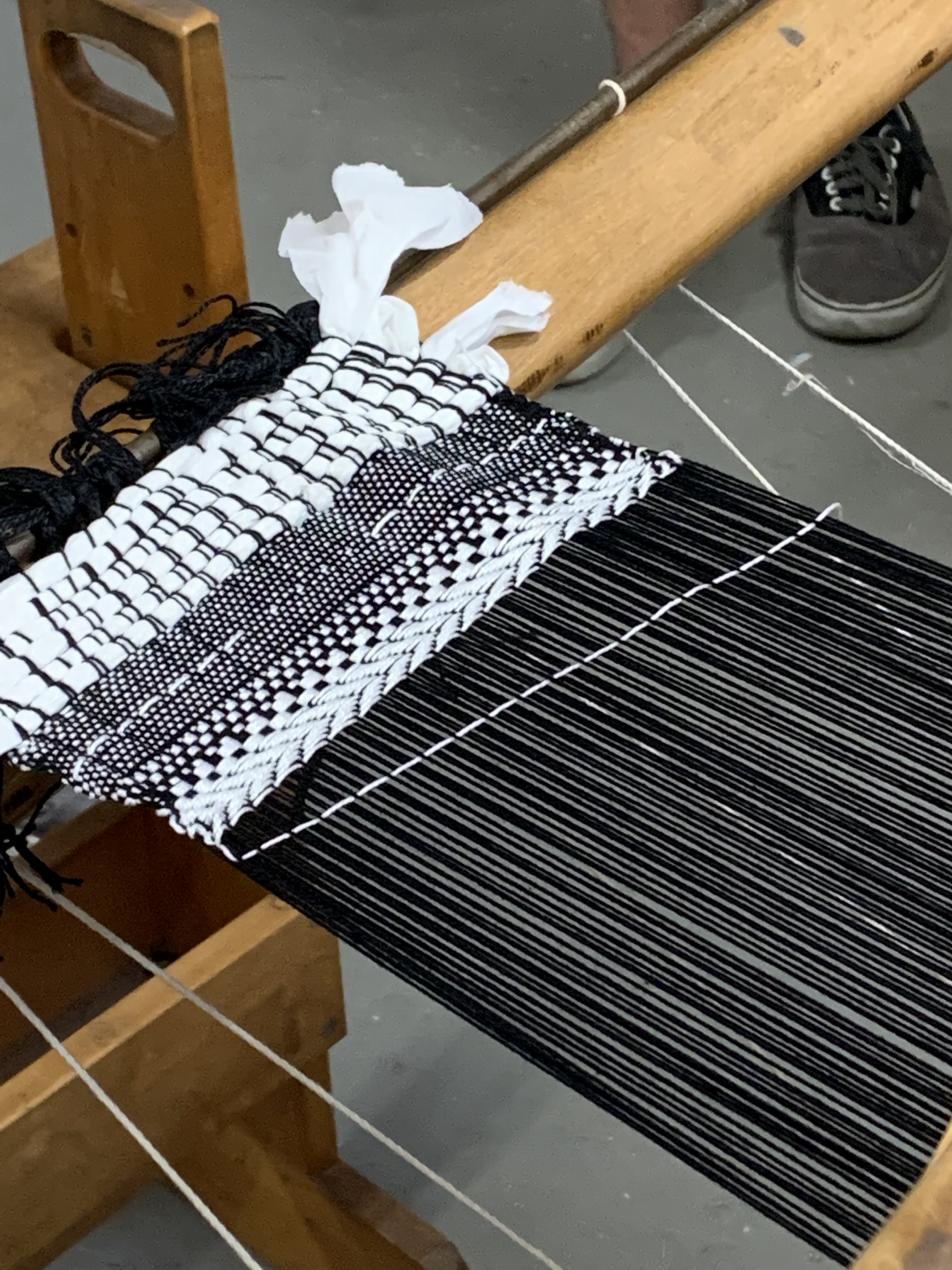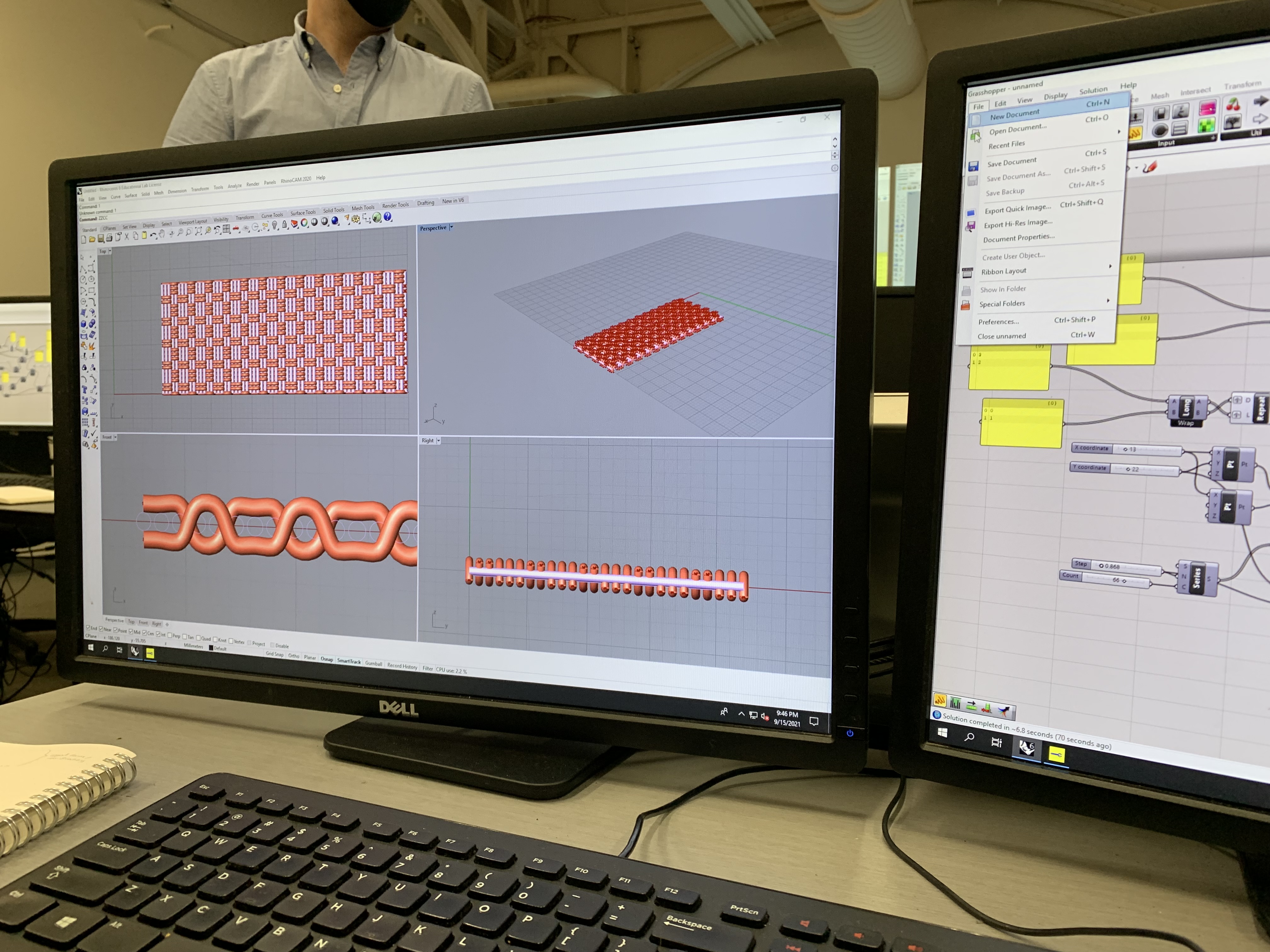
As our exploration with weaving began, I couldn’t wait but experience the tactile approach to the process. Having weaved before, I felt fairly confident with this exercise, however, receiving a completely different perspective from a new culture opened my eyes to many aspects of weaving I had previously missed out on, or understood differently!
We started the class with a few glimpses into various types of weaves with our guest speaker, Mary Smull. She gave us a quick history into how weaving takes place across cultures, and how it has evolved into powerloom from handloom. I wish we could speak a little about how weaving created livelihood for many communities across the globe.
After this discussion, we jumped into the technicalities of weaving. These specifically discussed:
- Plain Weave
- Twill Weave
- Satin Weave
We discussed the application of all these weaves, and created a weave draft on paper to understand how one would read the same in order to create a pattern out of a draft.
Post the theory, we looked into how the loom actually works. We looked at a multi harness loom and learnt the differences between raisers and sinkers, and many other technical components a loom consists. I must say, it was extremely thrilling to be back to the rhythm of the beater binding the threads together tightly!

After we watched Mary Smull demonstrate a quick weave through the working of the loom, it was time to imagine this very tangible activity in the realms of the intangible – Ryan with his expertised in Grasshopper!



Through Grasshopper, we experimented with various modules and components that Ryan walked us through. Compared to the first use of Grasshopper I was lesser intimidated this time, so was able to grab a seat all by myself. Ryan made the process real easy for us to understand the capabilities of the software in a space where we would like to envision a weave before we actually get onto weaving it.
I found it rather playful, and felt the software was in turn giving me design suggestions in place of me telling the software what is exactly to be done.
A great way to conclude the lessons for the day was to work on an actual piece on our own, and our assignment filled in that learning experience. Look out for my next blog to discuss how the weaving experience went!